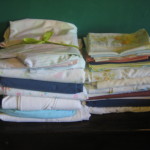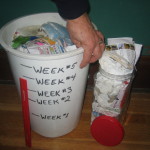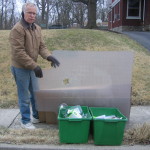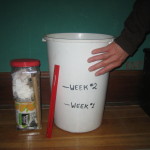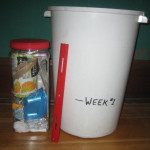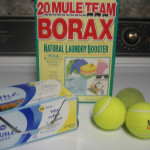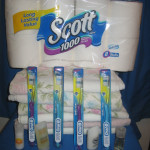 It all started out as a grocery shopping mistake. First mistake was that Jim asked me to do the grocery shopping because he was inundated with work.* Bottom line, it took me quite a bit longer and more grocery mistakes for me to do this task. My biggest mistake was that in a fit of frugality I bought single ply toilet paper. (I calculated the cost per square inch and it seemed like a deal.) Once I started using the toilet paper, I realized why we didn’t usually buy it. But, I had bought 24 rolls so we’d be wiping up for my mistake for awhile. I resigned myself to it since I didn’t want to “waste” it.
It all started out as a grocery shopping mistake. First mistake was that Jim asked me to do the grocery shopping because he was inundated with work.* Bottom line, it took me quite a bit longer and more grocery mistakes for me to do this task. My biggest mistake was that in a fit of frugality I bought single ply toilet paper. (I calculated the cost per square inch and it seemed like a deal.) Once I started using the toilet paper, I realized why we didn’t usually buy it. But, I had bought 24 rolls so we’d be wiping up for my mistake for awhile. I resigned myself to it since I didn’t want to “waste” it.
Next enters a house guest who stayed with us for a couple months. Trying to be a gracious guest, he sees the kind of toilet paper we had and buys more for the household. I didn’t want to offend him and he was gone before we finished the first mega package, so I decided to give his 8 roll pack to Mary Magdalene House, a respite place for homeless men to shower and do laundry. But toilet paper seemed like such a boring offering, so I scrounged through our linen closets and found 8 towels, 4 extra tooth brushes, and some shampoo from hotel stays to add to my bundle.
A question to ponder: What buying mistakes have you made? Have you found ways to turn your mistakes into a useable gift for others? What do you do with all those hotel shampoos? When’s the last time you laughed at yourself?
*In our more than balanced marriage roles, we had decided about a decade ago that Jim would do most of the grocery shopping since he also did most of the cooking and he knew what he needed. I don’t like to cook and we swapped several jobs to make this a sweet deal for both of us.



















